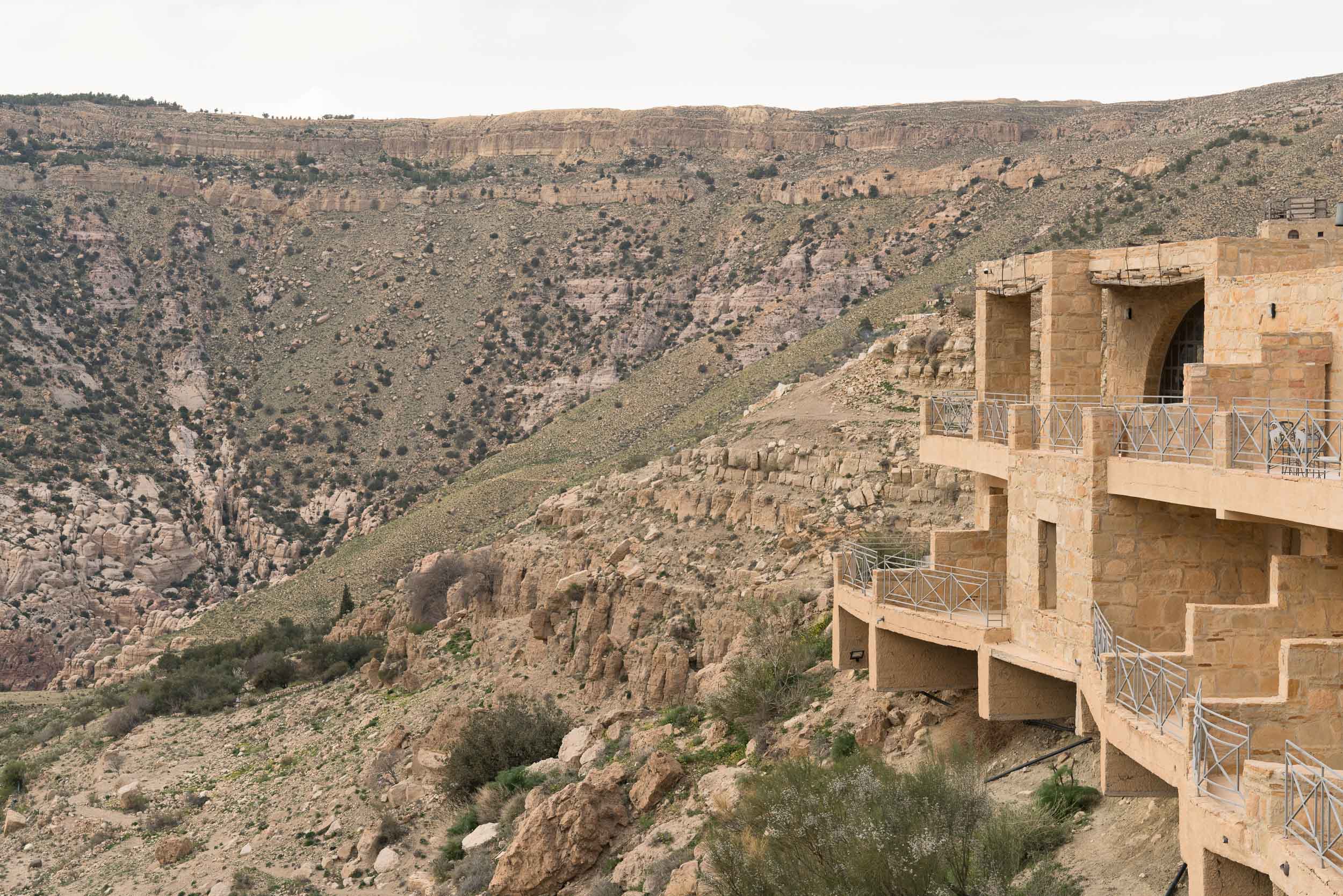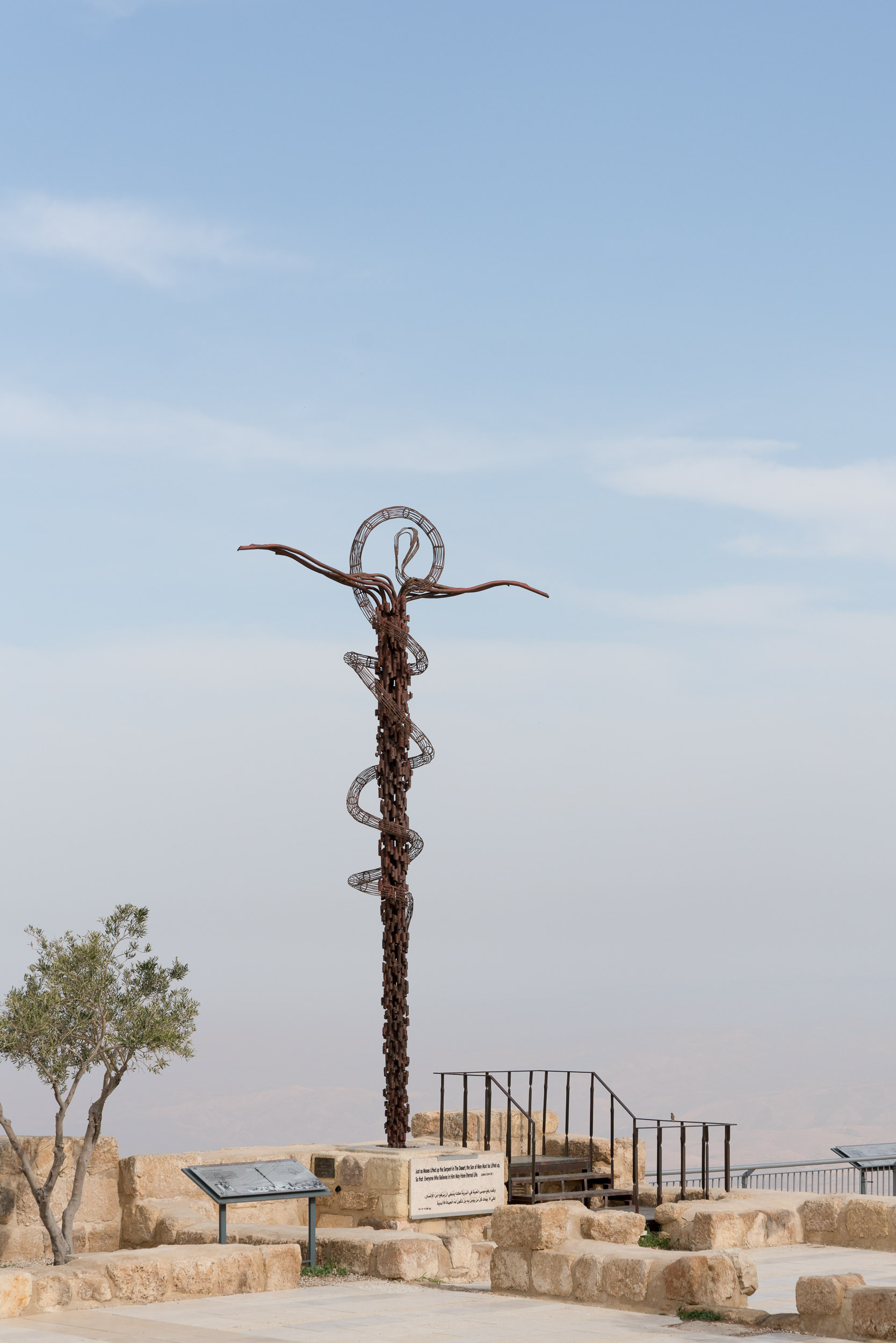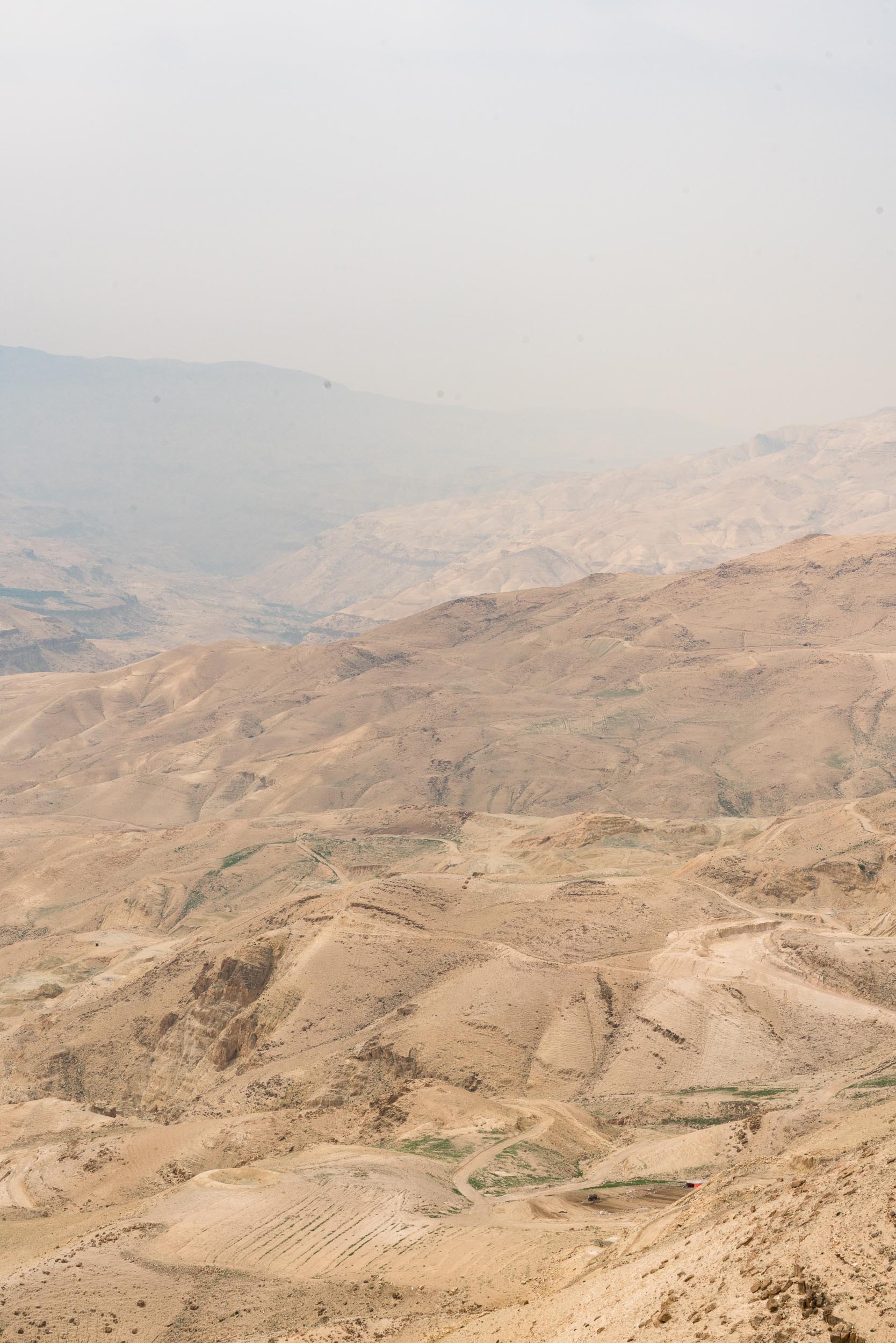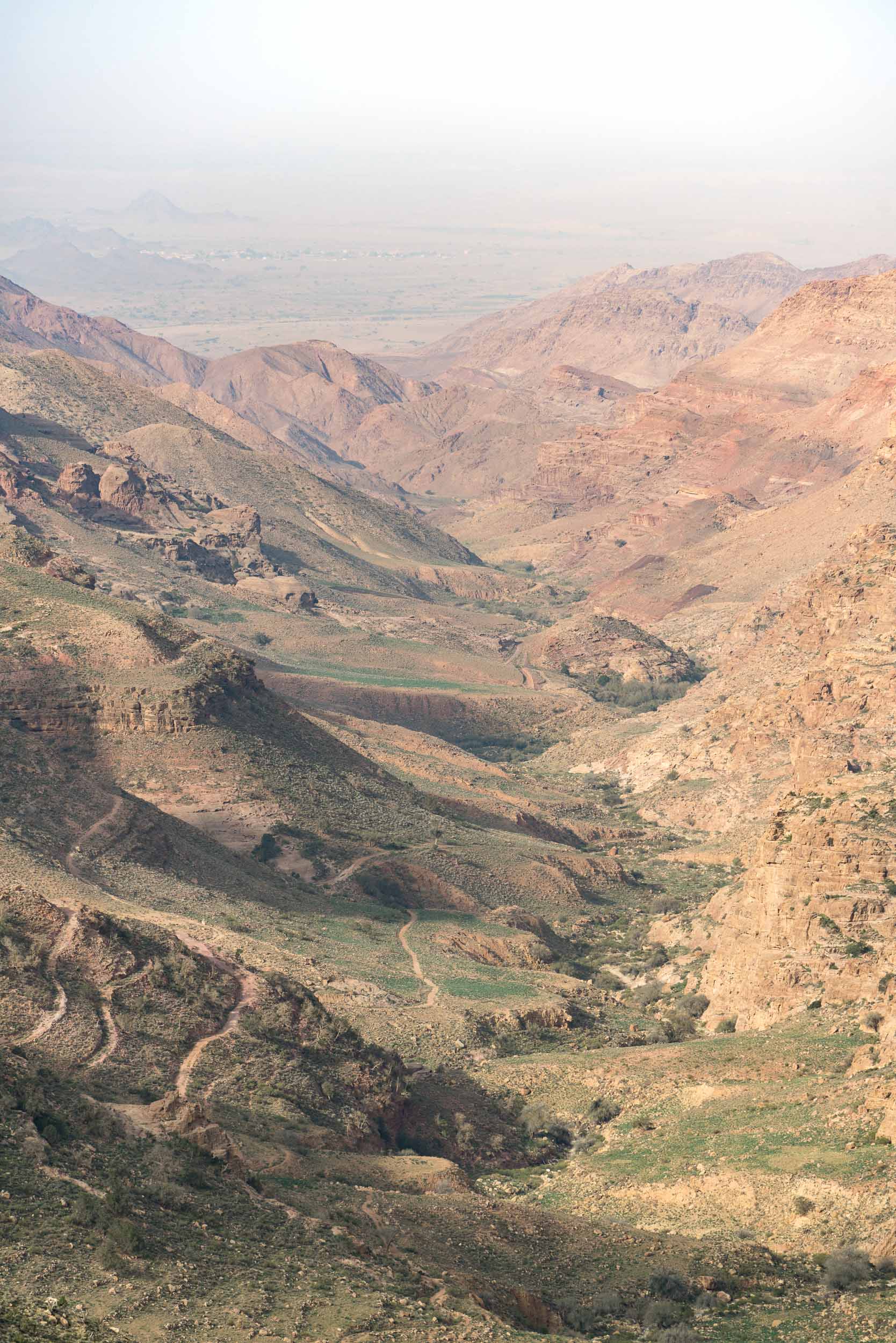Dana Biosphere Reserve is the largest nature reserve in Jordan with several hiking trails that vary from a few hours to a few days. Located on the edge of the reserve is Dana, a stone village that was completely abandoned until recent development started to revitalise the local community. We stayed at Dana Guesthouse for the night, which had views overlooking the Wadi Dana below. Early the next morning we started our hike down this valley. It was quite steep and winding at the beginning but eventually flattened out. Along the way we stopped for tea with a Bedouin who was herding his goats through the wadi.
Five hours and fourteen kilometres later, we had arrived at our destination. In the middle of the desert valley was the Feynan Ecolodge and we had planned to spend the night there before returning the next day by car. The lodge, like Dana Guesthouse, is part of the Royal Society for the Conservation of Nature in Jordan and is operated by the local Bedouins. There is no electricity at the lodge except for the solar-powered reception and bathrooms. At night the lodge is lit only by candlelight and the food is strictly vegetarian as there is not sufficient energy to refrigerate meat. After dinner, all of the guests visited the rooftop to look at the stars.
That night there was a huge storm and the next morning we woke up to find a stream flowing outside our balcony which had been dry the day before. As we were getting ready to leave, we were told our transfer would be delayed as the water levels were too high to cross the river on our way out of Feynan. A few hours later the water did not die down, but it seemed like we had a way out. A police tank was going to cross and take us over the river. We drove to the crossing to see the tank had made it over the gushing river safely; however it was determined to be too risky to drive everyone back over. The tank disappeared to try to find another crossing point. After waiting an hour for the tank (which we would later find out was stuck), the decision was made to turn back and stay another night at the lodge.
While we were disappointed by the change in plans, this allowed us to experience some of the other activities available at Feynan. We did a cooking class and helped prepare our lunch consisting of falafel, tahini salad and manaeesh, a bread with halloumi cheese. We also saw how arbood is made, a bread eaten by the Bedouins often when they are herding their goats in the mountains. We walked over to a local’s tent, announcing ourselves with a clearing of the throat as we approached. We were welcomed in and sat cross-legged around the fire, making sure to not point the soles of our feet out in front. As always, we were served tea and then watched as they mixed flour, salt and water together and bury the dough in the ashes. As we broke off pieces of bread and ate, our guide explained to us about their way of life.
The Bedouins move their tents to higher ground in the summer to escape the heat. In the winter, they return to be close to their water source and the local school, which now binds the community together more so than before. They do not own the land but it is understood that the camps belong to each of the families and everything is as they left it. It seems like a tough life but one our guide says he prefers over the city.
The next day we were relieved to see the stream had dried up. A local driver picked us up in his vehicle, an old truck that seemed luxurious compared to the van from the day before. There are no roads for the first eight kilometres and the ride is quite rough in some parts but at least we managed to get over the river. We sat back and enjoyed the views as we made the two-hour journey back to Dana.







































